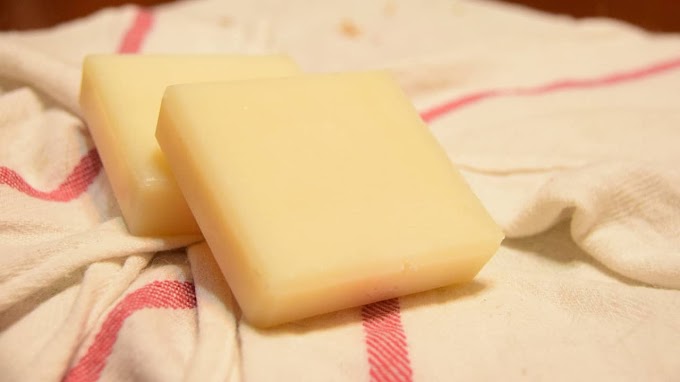 |
| Saffron Orchid |
As promised in my last post: How To Propagate Pothos, here's my new post How to Propagate Orchids at Home!
Orchids, with their vibrant colors and graceful shapes, are some of the most popular indoor plants. It's been my personal favorite since my early memories as we used to have them in our front and backyards.
They can be grown from seed or by dividing the plant and using a process known as propagation. Orchid breeding may seem like a challenge at first, but the process is pretty simple.
What is propagation?
Propagation is the process of taking a cutting from a plant or dividing the plant in half and then planting this new cutting. It is indeed a pleasure watching the cut shoots becoming a new plant :)
Since propagation is an asexual means of reproduction, this plant will be a direct clone of the mother plant and will have all the same characteristics. Nature is truly wonderful, no wonder I'm totally in love with it!
Gardeners often use plant propagation for a number of reasons.
First, it is a perfect way for beginning orchid enthusiasts to grow their plant collections. Second, it helps maintain plant size when plants have grown too large. The last reason people use propagation is that it produces clones. If a plant is particularly healthy or has produced spectacular color or bloom, it can be a great idea to use propagation to produce more of the same plants, maybe to gift to the family and friends.
There are some effective propagation methods to choose from. Plantsman, the plants' lovers like you, can divide a big plant and then plant each half individually.
This is also known as rhizome propagation. You can also take stem cuttings or aerial root cuttings. Some types of orchids periodically sprout young plants, known as Keiki, and these can also be used in propagation.
Propagation vs. Seeds
 |
| Pink Orchids |
People may wonder what the difference is between propagating and growing a plant from a seed.
The use of seeds is a method of sexual reproduction, in which two different plants will cross-pollinate to produce a new plant with some characteristics of both parent plants. Growing plants from seeds can be challenging because seedlings are very delicate.
Propagation, on the other hand, is usually much faster than waiting for the seeds to germinate and then growing those seedlings. The gardener also knows exactly what the propagated plant will look like, as it will be identical to the parent plant.
Depending on the method used, propagation can be ideal for gardening enthusiasts because it is so much easier. Again, it can help beginners expand their plant collections without the need to buy new plants or seeds.
How to Propagate Orchids: Propagation methods
The propagation method largely depends on the type of orchid being propagated.
Monopodial orchids, such as the Phalaenopsis and Vanda varieties, have a tall, upright stem, and aerial roots often grow from this stem. They also have nodes at the base of each stem that occasionally develops into new branching plants called Keiki.
Sympodial orchids, on the other hand, grow along long, horizontal stems called rhizomes. Roots grow at the base of the rhizome, and furniture that stores water grows at the top of the rhizome. Some common examples of sympathetic orchids are Oncidium, Cymbidium, Paphiopedilums, Dendrobium, and Cattleya.
Split propagation, bag bulb propagation, and stem cutting propagation methods work well with sympathetic orchids. However, short-haired orchids work well when using Keiki breeding or aerial root breeding.
How to Propagate Orchids: Section propagation
 |
| White-yellowish Orchids |
Large orchid plants can be divided into several sections, where you can grow several new plants. Before cutting the plant, carefully examine the root structure to determine where to cut it. Divide the sympathetic orchid into about 3 to 4-inch sections. Each section should contain at least 3 mature pseudo-bulbs.
Dividing can be done by gently separating a clean sharp knife, scissors, or plant. In most cases, plants have natural areas that are easily separated, so it is advisable to follow that separation as much as possible.
When the plant is divided, it can be easily transplanted. It is important to remove dead roots or leaves. The old pseudo-bulb should also be removed. New and small plants should be taken care of in the same way as old orchids.
This type of propagation is also called rhizome propagation. Essentially, it is the plant's rhizome that cuts and divides during reproduction.
How to Propagate Orchids: Back bulbs
Backbulb propagation is also possible when dividing a symphony run. The back bulb is a pseudo-bulb that still serves to store water in the plant, but no longer produces roots or flowers.
You can separate the rear bulb from the plant by itself or after dividing the plant. If there is active snow in the rear bulb, plant snow in the pot. If you plant it again, the rear bulb can lead to rooting. Some posterior bulbs sprout within a few weeks, while others can remain dormant for up to two years.
White bulb breeding is a great way to make young plants out of your favorite orchid, but it's also one of the slowest breeding methods. The new plant will not mature and will instead become small sprouts, which can take several years to fully grow.
How to Propagate Orchids: Keikis
 |
| White Orchids |
Monopodial orchids sometimes sprout outgrowths called Keiki. This outgrowth usually occurs in the nodes of the orchid, either directly above the root structure or away from the stem of the main plant.
It is best to wait for Keiki to develop leaves and grow roots that are at least an inch long, then carefully cut them off from the main plant. If possible, leave the Keiki until the leaves and roots are 2-3 inches long.
Keiki can also be encouraged to grow on orchids using Keiki paste. It is a paste containing cytokinins, a hormone that induces plant growth through cell division.
Keiki paste can be purchased at many garden retailers and at Amazon.
Also, it can easily be made at home. To make it, mix 1mg of Cytokinin and 1g of Warm Lanolin, sold as BAP or Benzylaminopurine.
Caution: BAP is a substance that irritates the eyes and skin, so wear protective gloves and goggles and work in a well-ventilated area!
After making or buying the dough, look for suitable nodes in the orchid. The nodes feel like the joints of the stem and are usually brown. Use clean scissors or a knife to cut off only the nodule, giving it the same feel as the rest of the stem.
Use wooden chopsticks or cotton swabs to scoop out a small amount of cakey paste. Wear gloves again while doing this. Apply the paste to the open node area. You should see the magic of the Keiki paste within a few weeks.
How to Propagate Orchids: Aerial roots
 |
| How to Propagate Orchids |
Aerial roots are long roots that grow on the main stem of single-haired orchids.
These roots can be carefully cut from the main stem and then planted in a new pot. The roots are fixed in the soil and eventually, new plants will sprout.
How to Propagate Orchids: Stem cut propagation
Stem cut propagation is the final propagation method. This method can be used for orchids with new growth areas or nodes. For this reason, it is best to use this method only for sympodial orchids.
At the end of flowering, select stems 10 to 12 inches long. Use clean scissors or a sharp knife to cut it off the bottom. Then divide the stem into sections 2-3 inches long. Make sure each section has a new growth area or a node somewhere along its length.
Place each section on moist peat moss. Keep the moss moist while the stem part takes root. Covering the potting tray with plastic wrap can increase the high humidity, which will help orchid growth.
Congratulations! You've just learned how to propagate orchids using different methods!
Hope you liked this post useful. Don't forget to share the post with your friends. Stay tuned for the coming posts pertaining to some interesting recipes that you can try this festive season through the New Year!
If you have anything to add regarding this post, I would love to hear from you, go on and comment or write back!







.png)
